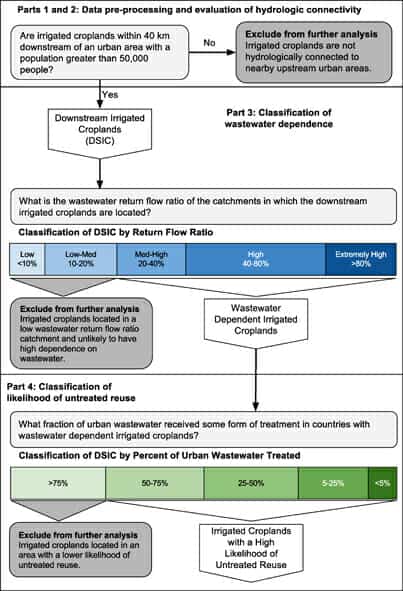1. Introduction Despite significant investments in wastewater treatment infrastructure, levels of treatment in rapidly urbanizing, low-income urban areas are not keeping pace with population growth [1, 2]. Globally, less than 10% of collected wastewater receives any form of treatment [3 ,4]. Concomitantly, agriculture is the largest water user in most countries, representing 70% of total global water withdrawals [5].

The reuse of untreated wastewater return flows in irrigated agriculture is commonplace downstream of urban areas [6]. As upstream regions have urbanized, surface water sources have become effluent dominated, resulting in widespread indirect or de facto water reuse [7]. In other instances, farmers deliberately extract water from drains or sewage pipes [8]. In these cases, regional water scarcity and/or readily available access to wastewater are primary motivations. Wastewater provides a consistent, reliable source of water where other sources do not exist [9].
The use of wastewater (both treated and untreated) in irrigated agriculture has been documented in more than sixty countries, though the true scale of the practice is likely underestimated [10, 11]. Using government reported statistics and case studies, Jiménez […]
Full article: A global, spatially-explicit assessment of irrigated croplands influenced by urban wastewater flows
More about various wastewater types in public water supplies:
Toilet to tap? Daytona Beach experiments with turning treated wastewater into drinking water
Septic systems are a major source of emerging contaminants in drinking water
Algae from wastewater solves two problems: biofuel and cleanup
Exploring the use of wastewater in agriculture
Understanding chemical byproducts formed during water treatment
